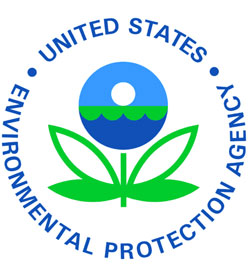The U.S. military is working with the Environmental Protection Agency to address concerns raised when the agency sharply criticized plans for a military buildup on Guam.
The pressure is on to figure out how to meet environmental laws, community expectations and a 2014 deadline to move in 8,600 Marines from Okinawa. An EPA analysis gave the military proposal its most severe rating, and both groups are trying to move forward without significant delays to the massive project.
The military is working under a self-imposed deadline to finalize its federally required plans — drawn up as an environmental impact statement — by the end of summer in order to begin construction this fall. They say that schedule is necessary to meet an existing agreement with Japan for the Marines’ move.
Meeting the summer deadline will require substantially rewriting and reanalyzing major parts of the military’s plans, including how it will house tens of thousands of temporary workers during construction and how it can avoid dredging as much as 25 acres of coral in Apra Harbor to make way for visiting carriers.
“We’re in agreement with most of the issues that have been brought out,” said David Bice, the retired Marine Corps major general tasked with spearheading the buildup. “How do we deal with it? That’s the crux of the matter.”
For now, the EPA has not asked the military to formally rewrite its proposal, a plan that also includes building an aircraft carrier berth and moving an Army air defense unit to Guam. The EPA could ask for that at a later date.
Instead, the military and the EPA are working together to address current and predicted environmental concerns on Guam that, when combined with the military’s plans, could further tax the island’s struggling water and sewage systems.
“We understand and support DOD’s military mission,” said Nova Blazej, an EPA special assistant who has been on the Guam military project for three years. “We’ve been engaged with the military on this — we want to help ensure that this project meets all national environmental laws and meets the DOD’s deadline.”
Despite three years of collaborative work on the project, Blazej said she understood why the military received such a poor rating from EPA.
The island itself is an environmental challenge. All of Guam’s sewage plants are in noncompliance with the Clean Water Act, according to the EPA. Making the island fully compliant with all environmental standards — without the buildup — would take $800 million to $1 billion, Bice said.
Still, the harsh rating was rare. The EPA reviews about 250 environmental impact statements from other federal agencies each year. On average, only three projects each year rate “inadequate,” she said.
That inadequacy, according to the EPA’s analysis, includes military plans that would “exacerbate existing substandard environmental conditions on Guam,” including public health, the island’s sole aquifer, sewage systems, air quality, trash collection, coral reefs and other marine life.
Solving many of those problems, both Bice and EPA officials say, involves getting more money from other federal agencies.
“How to pay for it is the next big challenge,” Blazej said.
Bice said Thursday he is seeing more movement on that front. Last week, Deputy Secretary of Defense William Lynn met with his counterparts from various federal agencies to talk about finding money for Guam, Bice said.
“This is a federal move,” Bice said. “It’s not just a Marines’ move. I’m talking about all federal agencies. They all have a stake in Guam. It cannot be done without their support.”
The EPA, despite its recent analysis, says it is trying to do its part. In years past, the agency has given the island about $1 million for water and wastewater improvements; this year, Guam got $13 million, Blazej said.
The EPA acknowledges that money doesn’t come close to refurbishing Guam’s water and sewage systems. And, in the end, it could be the EPA’s “inadequate” rating that has long-lasting effects for Guam and the buildup.
If this summer’s report from the military remains unsatisfactory in the EPA’s eyes, the project could get referred for mediation by the Council on Environmental Quality, a board that oversees the environmental impact statement process.
That move, however, is even rarer. From 1970 to 2000, only 26 projects were referred for mediation, according to the EPA. More recent numbers were unavailable.
The mediation would involve the council acting on behalf of the president to resolve the environmental issues and challenges between the EPA and the federal agency pursuing the project. The council’s purpose is not to stop any project from coming to fruition, and the agency has no record of that ever happening, Blazej wrote this week in an e-mail in response to a question. If the two sides cannot work out their differences, the president could resolve the matter. That has never happened, she said.
For now, meetings were to start this week between the EPA and the military to continue working on the Guam buildup.
Bice said that work, along with much of the criticism and comments during the past few months, will be addressed in this summer’s report. He also said the current deadline — moving the Marines to Guam by 2014 — remains.
“Many have said it’s unrealistic,” he said of the timeline. “I acknowledge that 2014 remains the target.”
Officials from the EPA were less certain the hard work will meet the military’s summer deadline for a final set of plans.
“I don’t think we can make a conclusion on that,” said Lynn Kuo, another EPA special assistant who has been working solely on the Guam military buildup project since last year. “If all the stars align, it could work out. But the stars have to align.”



